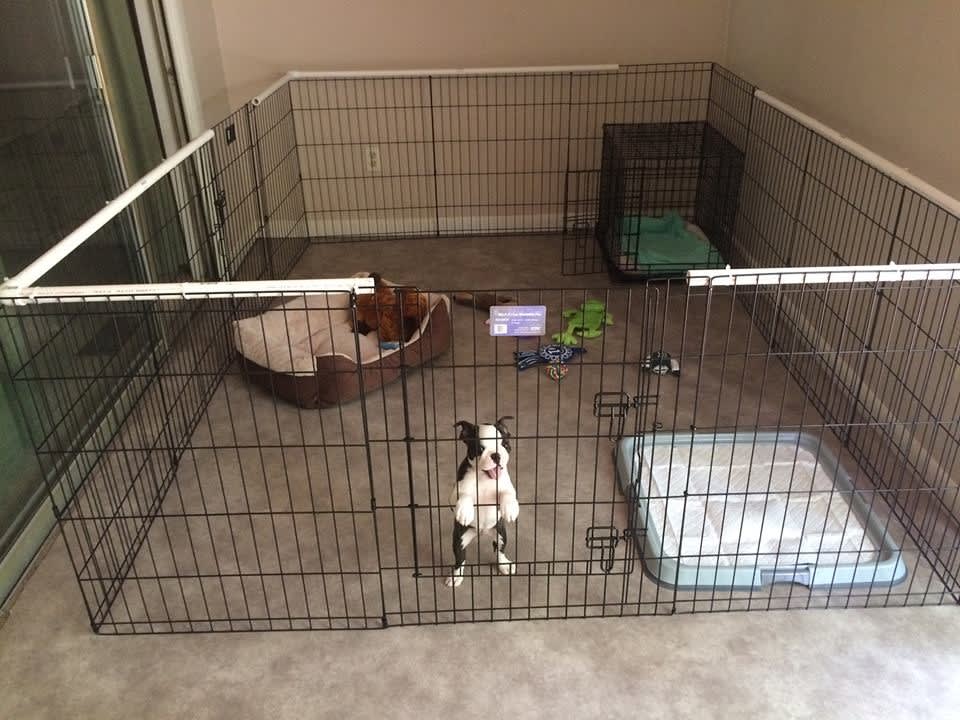Puppies that are never left alone are at a higher risk of developing separation anxiety or isolation distress. Here is how to teach your puppy that "alone time" can be very rewarding.
Shelter-at-home orders in times of COVID-19 have created some positive effects for our pets. Since more people are at home for longer periods of time, our cats and dogs get a lot more attention. Most of them love it!
You get the benefits of learning your puppy's likes and dislikes, have the joy of watching your puppy problem solve, and can spend more time teaching your puppy good manners.
Dogs are creatures of habit. They may adjust easily to us being at home, but what happens when restrictions for humans are lifted and we all go back to our "normal" routines? Suddenly being alone again can cause stress and frustration, which may trigger destructive behaviors.
Set your puppy up for success!
Puppies that are never left alone are at a higher risk of developing separation anxiety or isolation distress. Here is how to teach your puppy that "alone time" can be very rewarding:
Set up a "puppy zone" (aka confinement area). This may be a small room, kitchen, bathroom, or an exercise pen in a larger room. (Ideal space is 6'x4') Equip this "puppy zone" with a comfortable bed, a bowl of fresh water, and appropriate toys.

Hollow chew toys stuffed with food work great for this purpose! We recommend toys like Kongs or Busy Buddies that are sturdy and have a little give when the puppy chews on them. We do not recommend marrow or hollow bones since they can break your puppies teeth.
These toys should be special and only accessible when the puppy is in the "puppy zone". Don't forget to provide a puppy toilet far away from the bed. This can be a pee pad or maybe a litter box lined with sod or artificial turf. Don't use blankets/bedding/pee pads, if your puppy tends to eat those items.
- Set up a "puppy zone" (aka confinement area). This may be a small room, kitchen, bathroom, or an exercise pen in a larger room. (Ideal space is 6'x4') Equip this "puppy zone" with a comfortable bed, a bowl of fresh water, and appropriate toys. Hollow chew toys stuffed with food work great for this purpose! These toys should be special and only accessible when the puppy is in the "puppy zone". Don't forget to provide a puppy toilet far away from the bed. This can be a pee pad or maybe a litter box lined with sod or artificial turf. Don't use blankets/bedding/pee pads, if your puppy tends to eat those items.
- Start with a short session in the "puppy zone". Without much ado, place the puppy in the puppy zone with a special, food-stuffed toy and walk away. Leave the puppy in there for a few minutes and then let him/her out, again without making a big deal about it. If your puppy is whining, don't rush in right away. While we don't want to see puppies in distress, we also don't want to teach them that whining gets them what they want. Give your puppy a few minutes to settle down.
For more information on why creating puppy zones are a good idea visit Doggies Dens - The how and why to see a short video, or click here to read the article
Once the puppy has been successful when left alone for a few minutes, start building duration in the puppy zone. Go for a short ride or walk and slowly increase the time the puppy is left alone.
- Set up a routine and stick with it (even if your routine is different). Dogs thrive on routine. (ex. get up, elimination walk, breakfast (1/2 meal), play time, frozen kong with the other 1/2 of breakfast in puppy zone for a period of time, break time with elimination and play time, then quiet time, then free time then dinner and nightly routine). Try to keep meal times, walks, and bedtimes consistent.
- Give your puppy alone time every day, even if you are at home. (General consensus for leaving a puppy alone for a period of time is 1 hr per month of life). This helps with potty training.
- Allow them to relax in their puppy zone after a long walk or exercise.
- Do not make a big deal of "hellos" or "goodbyes".
- Catch and reward a puppy for quiet times, give them a frozen kong or other rewarding treat.
- Do not have the puppy zone in your at-home office. Take a break or work from another location.
Leaving a radio or TV at a comfortable volume can be soothing to a puppy (Music suggestion: Through a Dog's Ear)
